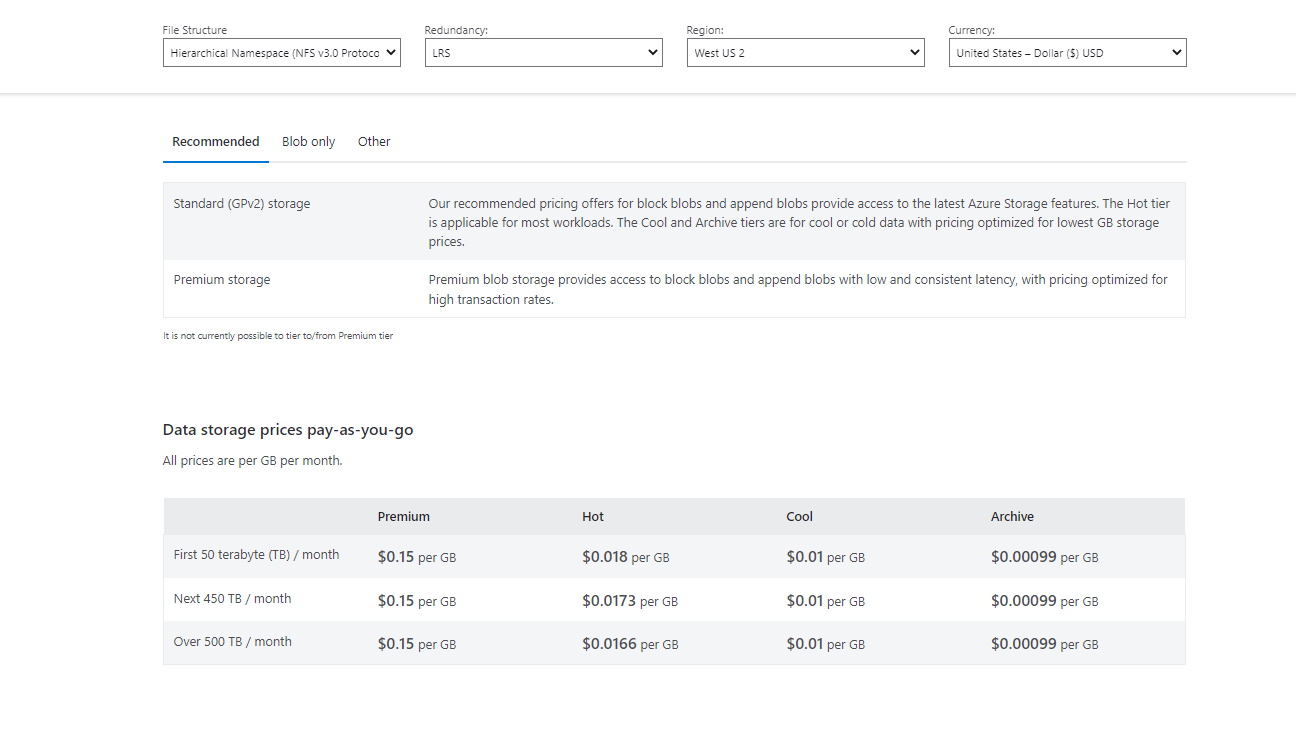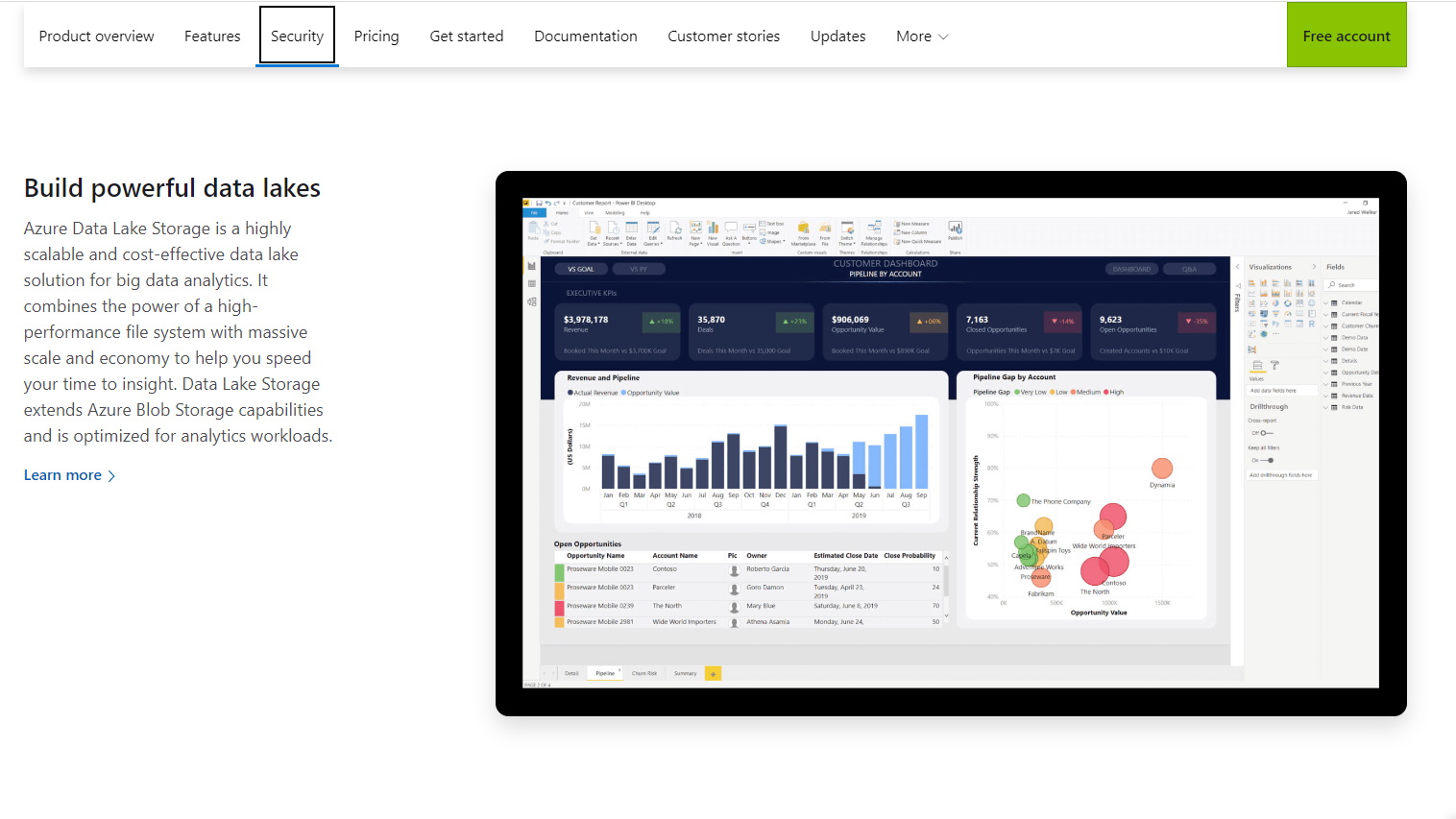Microsoft’s Azure Blob Storage (opens in new tab) is a full service object storage provider from a name that everyone who computes knows and can trust with the most critical of applications.
The upper echelon of cloud storage providers (opens in new tab) is a pretty exclusive group, and with the Microsoft offering, Azure takes the pole position in second place behind Amazon Web Services. This should hardly come as a surprise, with the folks in Redmond investing a staggering $1 billion annually for cybersecurity (opens in new tab) research and development. There is also further commitment to data security and privacy as Microsoft employs in excess of 3,500 security experts, and states impressively that it has “More certifications than any other cloud provider.”
While Microsoft Azure is a full service cloud storage provider, within this is the Azure Blob Storage, which is for secure object storage.

Azure Blob Storage: Plans and pricing
Microsoft Azure endeavors to be rather transparent about its pricing. However, like some other providers in the space, the pricing can get complicated given the numerous options with nuanced features for the less than veteran purchaser in the space.
Microsoft indicates that its ‘Block blob storage’ has pricing based on a number of variables. These include the monthly volume of data stored, the level of data redundancy, and the quantity and operation types performed on the data, along with data transfer costs.
For an example, data stored with the Hierarchical Namespace protocol (NFS v3.0 protocol), with LRS which is locally redundant storage with synchronous data copied three times in a single physical location in the primary region, in the East US server location has a cost of $0.15 per gigabyte of premium storage, which has a low and consistent latency.
While there is no free tier, there is a $200 credit available to trial the service. There is also the option for a discount with a longer commitment. Azure Storage Reserved Capacity can store the data at a lower cost with a 1 or 3 year term.

Azure Blob Storage: Features
Microsoft offers numerous options for its block blob storage which center around balancing the costs, versus the frequency that the data will be accessed and the anticipated time of retention. This gets organized around the tier.
The Hot tier is the most expensive one for storage, but the least to access. It is designed for data that will be frequently modified and accessed.
Then, as you might guess, there is a Cool tier. This is designed for data that is less frequently accessed or overwritten, specifically for a minimum of 30 days. In comparison to the Hot tier, the storage cost is less, but a higher access cost.
Finally, there is an Archive tier, which is offline storage, designed for data that is infrequently accessed. The latency requirement is flexible, which is hours. This tier is designed to be used for data that is stored for at least 180 days.
Azure Blob Storage: Support
The support for Azure Blob Storage depends on the plan chosen. It starts with all plans having access to support for billing, along with subscription management support. In general, this is kind of a given, or else as soon as someone has a problem with billing, if they can’t access some help just about everyone would simply cancel the plan.
However, the astute will notice from above that technical support is not included with the plan. Rather, at an additional cost, a support plan needs to be added on, for an additional expense.
Many Azure users will choose the Standard Support Plan, which has a reasonable cost of $100/month. This allows the user to assign a severity to the issue up to an “A” which is for critical business impact, a “Fast initial response” of under 1 hour, and issues can be submitted on a 24/7 basis.
For larger enterprise customers, the Professional Direct (aka: ProDirect) plan is worth consideration, for the higher cost of $1,000/month. This has online incident submission (customer service can be called on the phone, but they encourage you to use the online portal so the request is routed correctly), also with an initial response time of under 1 hour. It adds escalation management, support for non-Microsoft technologies running on the service, advisory services to guide best practices, and pooled service account management with “Ask the experts” webinars.
Also consider:
The Azure Blob Storage is a strong contender for enterprise customers that need a custom made plan, with granular control of the types of storage and the precise level of support.
We would also consider the IDrive e2 (opens in new tab) for an object storage service, particularly for smaller businesses. The advantages of this choice start with the free data allotment of the 10 GB, and after that the pricing is considerably simplified at $0.004/GB/month, with free ingress and egress. It also offers a high uptime with a high level of security, with direct phone support, although limited to weekdays, along with 24/7 chat support.
Azure Blob Storage: Final verdict
It’s easy to see why Azure Blob Storage is a strong entry in the object storage arena from the computing juggernaut, Microsoft. Users will appreciate the large range of plans, with plenty of options to choose from both on the storage side and the support side, the option for a multiyear or annual discount, and the numerous server locations globally.
The downsides to be aware of are that there might just be too many options for a plan, and that technical support beyond billing requires an add on plan, and even with it direct phone support is not encouraged. All in all, this Azure Blob Storage makes it onto the short list of providers to consider, especially for enterprise customers with complicated storage needs.
We’ve listed the best free cloud storage (opens in new tab).




